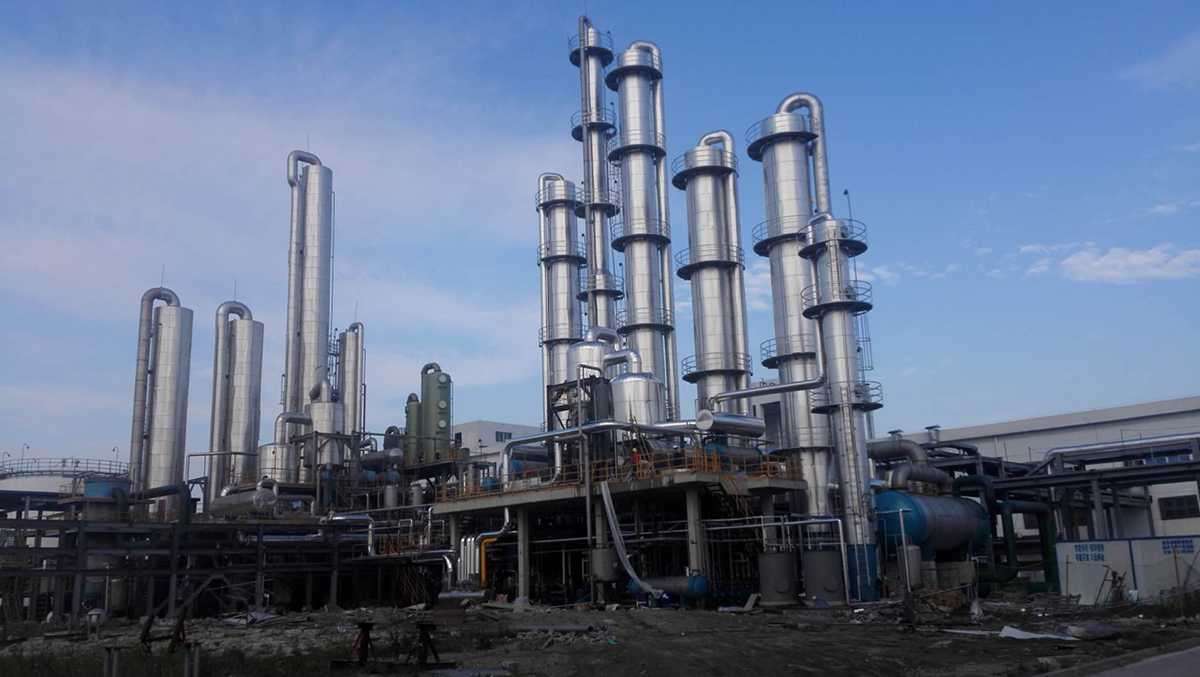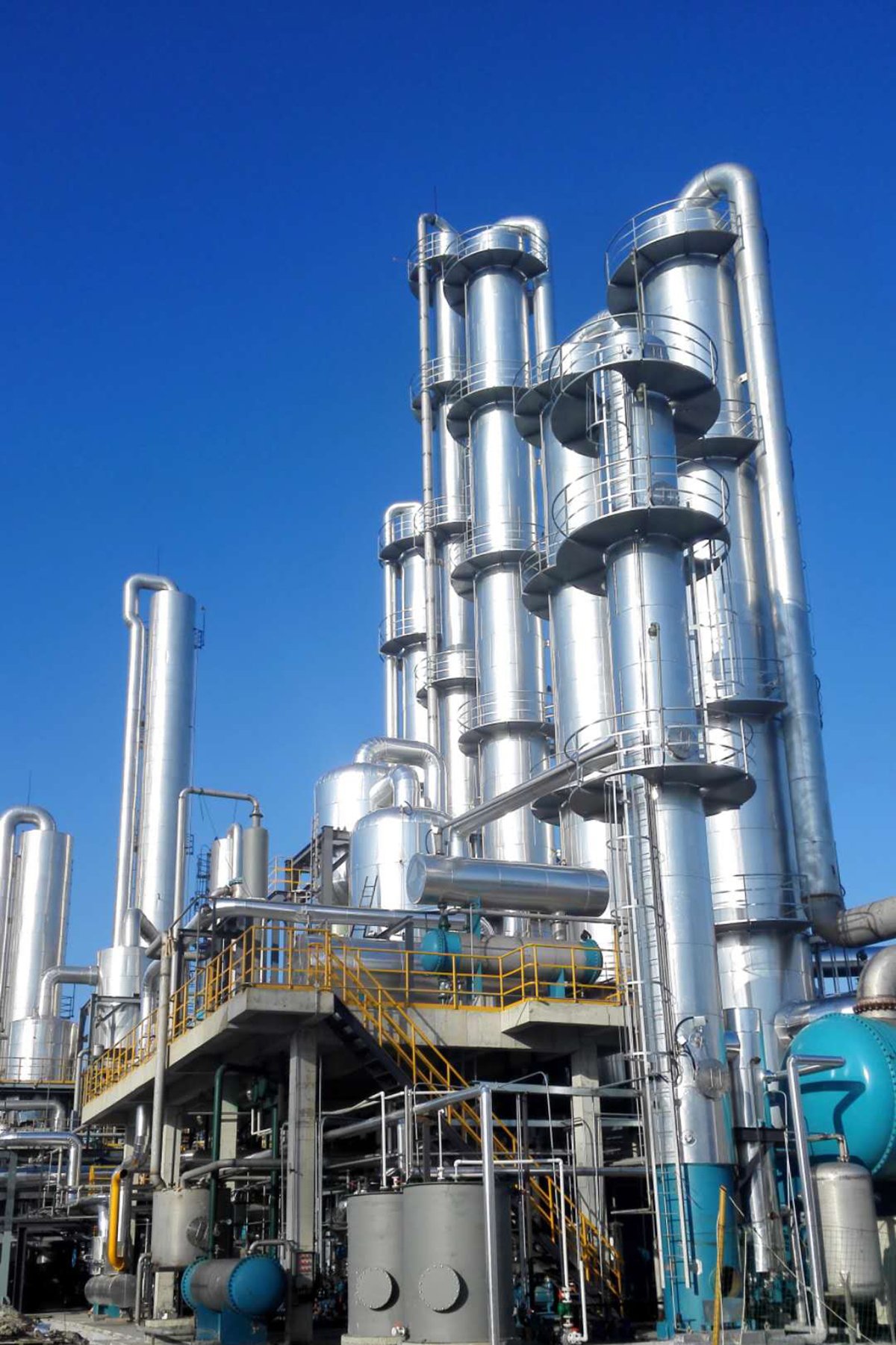Function of Distillation Column
A distillation column is a vital piece of equipment used in the process of distillation, which is a technique for separating components of a mixture based on their different boiling points. It plays a critical role in the chemical, petrochemical, and pharmaceutical industries, where separation of liquid mixtures into individual components is required.

Basic Operation and Function
The basic function of a distillation column is to separate liquid mixtures into their individual components by exploiting differences in boiling points. The column is designed as a vertical, cylindrical vessel with several trays or packing materials inside that allow for continuous vaporization and condensation.
- Feed Input: The mixture to be separated (the feed) is introduced into the column, typically as a liquid. The feed is usually heated before entering the column to initiate vaporization.
- Vaporization and Ascending Flow: Inside the column, the feed is heated at the bottom (often in a reboiler) to convert it into vapor. The vapor then rises through the column, where it encounters trays or packing that allow partial condensation and re-vaporization at each stage.
- Condensation and Descending Flow: As the vapor rises, it gradually cools, and some of the components condense. The condensed liquid, called the liquid phase, is collected on trays or packed sections. The heavier components of the mixture condense more easily and thus tend to accumulate lower in the column, while the lighter components remain vaporized and ascend further up.
- Component Separation: At each tray or stage in the column, a portion of the vapor condenses, creating a liquid phase that is richer in the more volatile component. The components with lower boiling points (more volatile) will tend to rise to the top of the column, while those with higher boiling points (less volatile) will concentrate at the bottom. The final result is a separation of the mixture into fractions with varying compositions.
- Top and Bottom Products: At the top of the column, a condenser cools the vapor and produces a liquid product, often referred to as the distillate or overhead product. At the bottom of the column, the remaining heavier liquid is withdrawn as the bottoms or residue, which is enriched in less volatile components.
Trays and Packing
There are two main types of internal components used in distillation columns to facilitate separation: trays and packing.
- Trays: These are horizontal platforms inside the column that allow vapor to pass through while providing space for liquid to accumulate. They are equipped with weirs (to retain liquid) and downcomers (to allow liquid to flow between trays).
- Packing: Packing consists of various materials (such as structured or random packing) that provide a large surface area for vapor-liquid contact. It is used in place of trays in some columns to enhance mass transfer efficiency, reduce pressure drop, and increase capacity.
Types of Distillation

Distillation columns are used in various types of distillation processes, including:
- Continuous Distillation: In continuous distillation, the feed is continuously introduced into the column, and both the distillate and bottoms products are continuously withdrawn. This process is typically used for large-scale operations such as petroleum refining.
- Batch Distillation: In batch distillation, the feed is added to the column in discrete amounts, and the separation is carried out in stages. This type of distillation is often used for smaller-scale operations or when the mixture is too variable for continuous distillation.
Applications of Distillation Columns
Distillation columns are widely used in various industries for different purposes:
- Petroleum Refining: In oil refineries, distillation columns are used to separate crude oil into different fractions like gasoline, diesel, kerosene, and other petrochemical products based on boiling points.
- Chemical Production: They are used in the separation and purification of chemicals, such as alcohol, solvents, and acids, in chemical manufacturing processes.
- Pharmaceutical Industry: Distillation is used for purifying solvents or extracting essential oils from plants.
- Food and Beverage: Distillation is used to produce spirits (e.g., whiskey, vodka) and to purify drinking water (e.g., distillation of seawater).
Performance Factors and Optimization
Several factors influence the performance of a distillation column:
- Column Design: The design of the column, including the number of trays or the type of packing, impacts its separation efficiency. More stages (trays or packing) generally result in better separation.
- Reflux Ratio: The reflux ratio, defined as the ratio of the liquid returned to the column to the liquid withdrawn as distillate, affects the separation efficiency. Higher reflux ratios typically lead to better separation but require more energy.
- Operating Pressure and Temperature: The pressure and temperature inside the column affect the relative volatility of the components in the mixture, which in turn influences the ease of separation. High pressure can reduce the boiling point differences, making separation harder.
- Feed Composition: The composition of the feed mixture affects the ease with which separation can be achieved. If the components have very close boiling points, a larger number of stages or higher reflux ratios may be needed.
- Energy Consumption: Distillation is an energy-intensive process due to the need to continuously heat and condense the mixture. The reboiler provides the heat required for vaporization, and the condenser cools the vapor, requiring careful management to optimize energy use.
Conclusion
The distillation column plays a central role in separating mixtures of liquids by utilizing the differences in their boiling points. By carefully controlling the operating conditions, column design, and internal components (trays or packing), distillation columns can achieve high levels of separation for a wide range of industrial applications. The proper operation of these columns is essential for maximizing product purity, minimizing energy consumption, and ensuring the efficient use of resources in industries ranging from petrochemicals to food processing.

